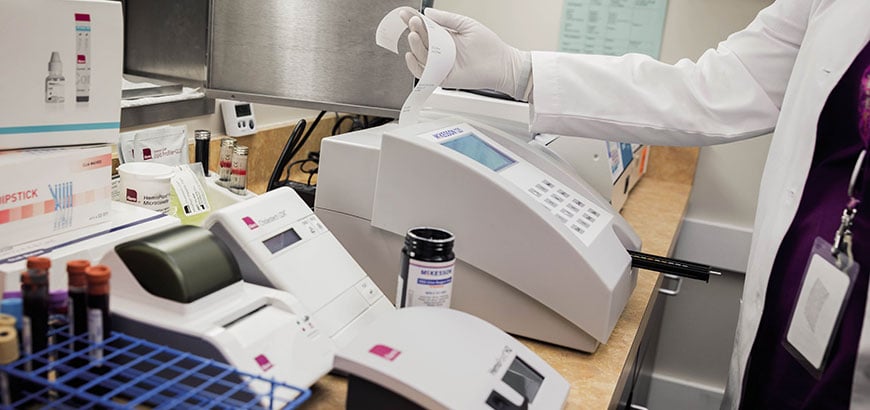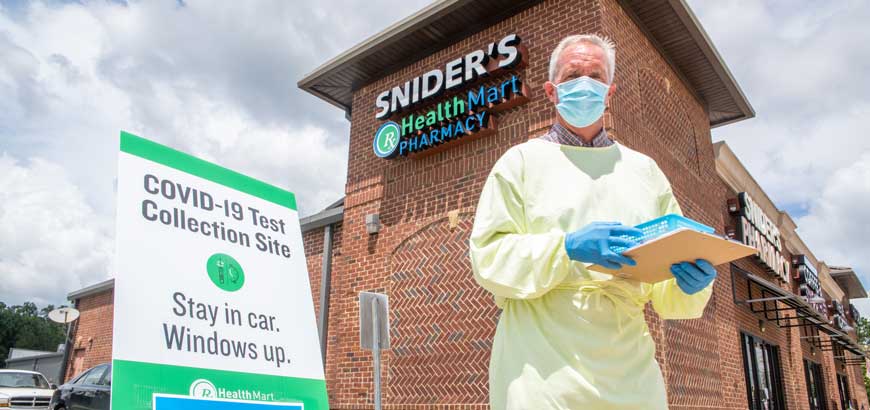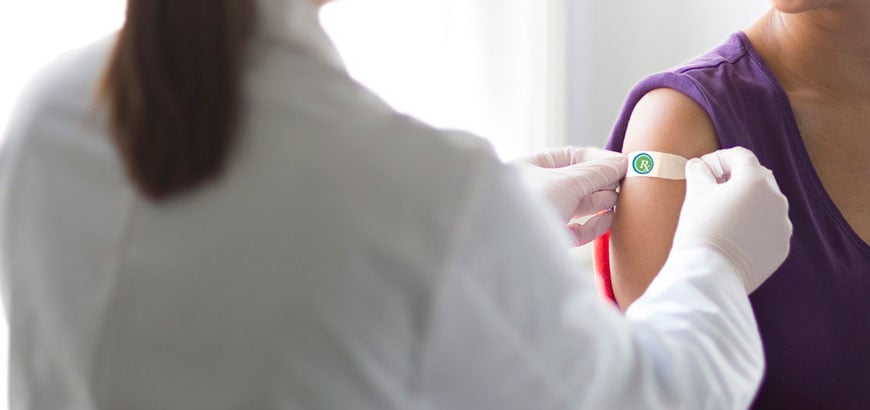Read time: 4.5 minutes
Respiratory season is a significant burden on the U.S. healthcare industry. Last year 26M+ flu cases were diagnosed,1 1.5M outpatient clinic visits among children under the age of five were attributed to Respiratory Syncytial Virus (RSV)2 and hospitals experienced 1.3M visits to emergency rooms (ER) to treat pneumonia.3
While experts hoped COVID-19 cases would drop with the arrival of warm summer weather similar to other respiratory illnesses, and some geographic regions have experienced a flatline or decrease in cases, other communities are experiencing a spike that is overwhelming local healthcare resources.
As healthcare organizations look toward the 2020-2021 respiratory season, they anticipate the unprecedented convergence of the typical respiratory illnesses: flu, pneumonia, bronchitis, RSV – with COVID-19 cases – and it is forcing them to reevaluate their approach to patient diagnosis, management and care.
The need for rapid and accurate diagnosis
The goal of testing is to provide rapid and accurate diagnosis, quickly get patients on the correct course of treatment, and in the case of easily transmitted viral illnesses, such as flu, help limit spread among the community.
"Speed and accuracy of COVID-19 testing is particularly important given its highly contagious nature and the significant risks it presents to vulnerable populations, but the demand is outpacing the supply for testing and PPE," said John Harris, VP, Strategic Accounts, Laboratory, McKesson. "Labs are performing hundreds of thousands of tests per day, which is placing a tremendous strain on the supply chain."
Point-of-Care (POC) Testing Options
Active viral infection tests:
- Antigen: Nasal or nasopharyngeal swab at POC that delivers results in minutes.
- Molecular (RNA): Nasal or nasopharyngeal swab at POC that provides results in minutes.
Antibody tests:
- Serology: Blood test to determine if patient was previously infected or exposed.
Keys to formulating a successful testing strategy
In order to implement a successful respiratory testing program that includes multiple test types (flu, RSV, Strep A and COVID-19), each individual healthcare entity should determine its own testing strategy that is aligned to its patients’ needs. This includes which tests to administer, where, when and how. Key areas for consideration:
A unified approach
The number one priority is to develop a holistic approach to testing. At the system level, a healthcare organization may evaluate testing options based on effectiveness, availability and cost.
An organization may consider its specific testing goals to evaluate whether a patient has potentially been exposed to a virus – whether it’s to quickly test and secure results at the point-of-care (POC) or to obtain accurate results through "swab and send" testing performed at a central lab.
"From a supply chain and cost perspective, an organization can turn to its distributor to understand current technologies on the market," said Harris. "With the on-set of COVID-19 there is a broad range of new diagnostics aimed at helping to address the pandemic."
"At McKesson, when we see opportunities or issues (e.g. promising new products, potential supply shortages), we inform our customers so they, in turn, can make the knowledgeable decisions for their organizations," said Harris.
Diversified options
While a healthcare organization should have an overarching testing strategy, that doesn’t mean it can apply a one-size fits all approach. Different care site categories manage different patient populations in different ways and therefore have different testing requirements. While decisions should be driven from the top to maintain strategic alignment, they’ll take into account the needs of front-line healthcare workers and their patients, which can vary by location.
Diversifying test options can help an organization address a broad range of requirements, protect staff and patients, and streamline the path to securing results. For example, it might decide that its physician offices perform rapid POC molecular testing for flu but adopt antigen testing for COVID-19 due to availability.
"The organization’s distributor can serve as a valuable resource, presenting practices from throughout the industry, and introducing testing options available and considerations for test supply management (e.g. proper storage, temperature)," said Harris.
Conclusion
Concerns and fears abound among healthcare providers and patients as we approach the upcoming respiratory season at the same time as COVID-19 cases surge in many markets. Now is the time for organizations to formulate their respiratory testing strategies with the understanding that past approaches to testing may not be effective in managing the unprecedented convergence of illnesses on the horizon.
A holistic approach to testing, that takes into account individual care site needs and is guided by industry knowledge supplied by distributors and other business relationships, will help organizations accurately diagnose respiratory patients and begin their course of care. While this has been important, this year it is critical to the well-being of our nation. The greater number of COVID-19 patients that clinicians can accurately diagnose, and the faster they can do so, the quicker these patients can isolate to help prevent further spread.
Test Site Considerations
- Patient flow: Can testing be safely performed on-site by clinicians? Do they have the necessary PPE to protect themselves and their patients against COVID-19? Do they have the ability and space to separate suspected COVID-19 patients from patients presenting for other conditions?
- Clinician comfort: Different testing mechanisms require different workflows, including the collection and processing of samples. Which testing methodology is most appropriate for the site’s clinicians so that they can deliver effective results?
- Product availability: If there is a shortage of testing and supplies at a site how will the organization address this – stop testing at this site, redirect it elsewhere or switch to a different method of testing?
1Flu Season That's Sickened 26 Million May Be at Its Peak, U.S. News & World Report, February 21, 2020
2Respiratory Syncytial Virus-Associated Mortality (RSV-Associated Mortality) 2019 Case Definition, Centers for Disease Control and Prevention
3Fast Facts Pneumonia, Centers for Disease Control and Prevention



Share
Post
Post
Email